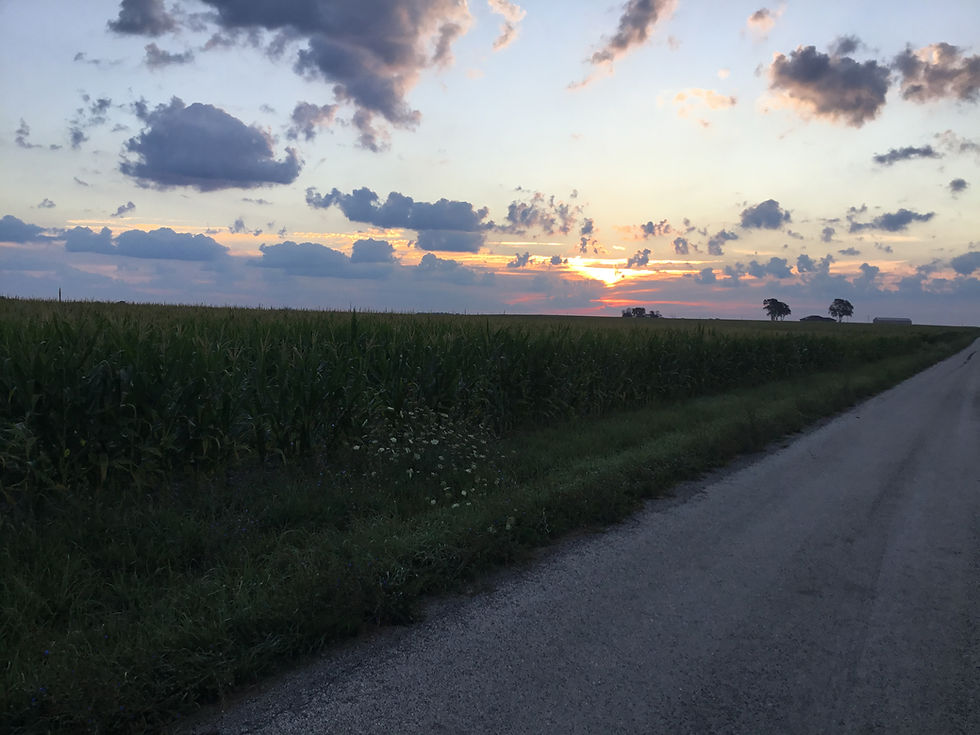Is farmland set to deflate?
- michaellauher
- Jun 13, 2022
- 4 min read
Updated: Jul 8, 2022
Reprinted with permission from an article I wrote for Prairie Farmer in March 2022.
The Federal Reserve Bank of Chicago released its quarterly AgLetter in early February, reporting land values in Illinois jumped an astonishing 18% in 2021. Auction results for prime farmland are reaching stratospheric levels of $17,000 to $18,000 per acre. These are prices never seen before.
Is it a bubble?
Economic bubbles can be described as the competition of greater fools. That is, the investor purchasing today relies on the presumption that there is a greater fool who will buy from them at a higher price tomorrow.
Of course, nobody thinks they are the fool in the moment. Everybody knows smart business is to buy low and sell high. Or if that isn’t an option, buy high and sell higher. But if prices continue moving up, is it foolish to be buying farmland at these prices, or is it foolish not to?
Clarity — and wisdom — come from hindsight.
I spent the first 14 years of my career representing sellers brokering farmland and the next 11 on the other side of the table, representing large institutional clients purchasing it. Trying to determine direction and fundamentals that drive farmland value was an important part of the job. No one wants to be the one who bought at the top of the market.
I am certainly no economist, but in hindsight, I have come up with three questions I ask to help determine whether an investment is experiencing a valuation bubble or not. Or in other words, is the price being asked or paid greater than the underlying value of the investment?
1. Is everybody an expert? Legend has it that in 1929, Joe Kennedy (JFK’s father) knew it was time to get out of the stock market when he started getting stock tips from his shoeshine boy. My “shoeshine moment” prior to the housing crisis of 2008 took place when watching a renovation show on TV. In this show, an out-of-work administrative assistant with no experience in real estate investing made big mistakes, yet flipped a house for more money in a few months than I made in a year. At the time, I felt like the fool for not jumping into the house-flipping business.
What about today? Is everybody an expert in farmland? While there are a lot of new players in the farmland investment world, it is not at the level where the everyday layman thinks they can make a killing in the market. That’s one of the advantages of farmland being a more difficult investment vehicle to enter. Farmland REITS (or real estate investment trusts) and crowdfunding farmland investment companies are investment vehicles that make for easier access to farmland as an investment. But, as a total percentage of farmland transactions, they are really very small players.
2. Are bankers throwing money at it? By and large, bankers are not bad people. I used to be a banker. But if the lending climate is such that it is super easy to get a loan and/or easy to get a loan that requires little money down, be worried. Be very worried.
In economics, there is a concept called moral hazard. In essence, it says that someone who has little skin in the game has incentive to take greater risks than someone who has more to lose. One of the key factors of the ag crisis in the early ’80s was what happened in the 1970s. Agriculture boomed in the 1970s, and everyone figured good times were here to stay. Easy-to-obtain loans with little down payment helped inflate prices, which was then used as justification to make more loans with little money down.
Avery Schrock with Farm Credit Illinois says the financial crisis of the ’80s is still very much on the minds of lenders today. Today, they want the loan to make sense both to the borrower and to the members of the co-op. A significant down payment is required, and caps are set on a case-by-case basis. Money is available to buy farmland, but by no means are lenders throwing money at it.
3. Which way is the herd going? Humans are social creatures. We’ve all laughed at hidden camera videos that had everyone on the elevator turn to face the back while the one being pranked still faced the front. Often, the pranked individual turned around to face the back like the others. They follow the herd even when following was ludicrous.
Investors can act the same way. If everyone is investing in it, there is a strong social pull to invest in it as well.
Which direction is the herd going on farmland values? In the Federal Reserve Bank report mentioned earlier, a majority 56% of responding bankers think farmland values will continue to go up in the first quarter of 2022. But a sizable percentage, 44%, think values will remain stable or go down. Definitely not a stampede.
There are competing fundamental factors that could make the market volatile in the near future. Inflationary pressure will push values up while any interest rate hikes could push values down.
So, back to the original question. Are we in a farmland bubble? I don’t believe so, but it could get interesting.





Comments